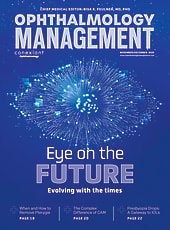You probably recognize Auguste Rodin’s statue, The Thinker. Most likely, not the original in Paris, but a replica or souvenir or a poster of it. The male figure is deep in thought; it is said he is contemplating Dante’s circles of Hell. Critical thinking is far more spontaneous, and in the medical world, sometimes instantaneous.
Critical thinking is evidence-based patient care; it relies on knowledge, prior experience and the ability to piece these items together in order to provide the doctor with the most relevant information so they can develop their differential diagnoses upon examination. Critical thinking is a systematic and logical analysis of the patient’s symptoms and being able to weed out the symptoms that don’t relate to the chief complaint or reason for the visit.
This applies to the information the patients share that don’t relate to the main reason for the visit but may be an unrelated complaint. For instance, the patient who was added on for a foreign body but states they have had blurred vision for 2 months.
Listen to the Patient’s Comments
When taking the history of present illness (HPI), it’s important to listen and be curious about the patient’s comments and not simply ask the quantifiers as prompted by the EMR. The 8 quantifiers are:
- Location (where is the problem)
- Duration (how long has it been happening)
- Timing (when during the day does it occur)
- Context (with what activity is the problem noted)
- Quality (description of the symptom)
- Severity (how mild or bad)
- Associated signs and symptoms (what else occurs)
- Modifying factors (what was tried and did it improve or worsen)
A good habit is to document 4 of the above classes. By first learning the location and duration of the problem, only 2 others are needed. A good example of a CC/HPI is if a patient presents for 1 year (duration) follow up of cataract OU (location). She notes difficulty driving (context) at night (timing) due to bright headlights.
Furthermore, if you find something that doesn’t make sense when performing the skill sets, take note and either ask someone more senior than yourself or do further test-ing. But remember, if this is a separately billable procedure, such as an OCT, there must be an order in the chart to justify the need for it.
Take the example of an established patient who pre-sented for a follow up of open-angle glaucoma. When tested at his last best-corrected visual acuity (BCVA), he was unable to read the full line. The technician increased the size of the rows and noted, as he improved his original visual acuity, he easily read the outer letters but consistently missed the central ones. The technician then added the Amsler grid and noted the patient indicated the center of the grid was missing. Upon examination, the ophthalmologist diagnosed him with a macular hole.
In this case the HPI appropriately reasoned the pa-tient's responses to questions related to his glaucoma. When asked if he had other concerns, he answered that there were none. The macular hole could have easily been missed if this was scheduled as an undilated visit and the Amsler was not performed. The technician recognized the middle optotypes were excluded and that the macula is responsible for central vision—central vision loss is often first screened using the Amsler grid, which is a component of a comprehensive workup, not requiring a separate order.
Objectivity is Key to Critical Thinking
At the core of our job is patient care. Each patient should be treated as an individual and not a diagnosis. Their symptoms are unique to them and although many will be textbook presentations of a condition, there will be some that do not fit the mold. Objectivity is key to being a critical thinker. Thinking in this manner does not come easily, or automatically. It takes time and the willingness to question when something doesn’t make sense. If you are unable to ask the doctor or scribe, review the chart after the exam. By reading the history for additional information you will learn what questions to ask if you are presented with similar symptoms in the future. The assessment and plan will provide you with further information and possibly lead you to a systemic diagnosis. Even better, if you are able to observe the exam of this patient, you will hear firsthand the additional information provided and listen to the provider’s reasoning. After all, the eyes are the windows to the soul—and the rest of the body.
Critical Thinking Can Be Learned
Not everyone has the innate ability to think critically, but it can be learned. It is primarily self-directed; a mentor can help you develop this ability by questioning you as to the relationship of the symptom to the anatomy and other conditions the patient may have. The skills that must be developed are:
- Observation: Noticing what the patient is saying and how they are appearing
- Analysis: Taking a thorough pointed history
- Inference: Using logical relationships to draw hypotheses
- Communication: Discussing your thoughts with others to further develop your knowledge
- Application: Utilizing the experience to future similarities
The ability to become a critical thinker begins with the initial training. When new technicians are trained to perform the skills without learning ocular anatomy, conditions and their symptoms, they are likely to go through the motions of the workup without fully understanding what abnormal findings may indicate. As a result, a patient who should not be dilated might be because that is the protocol or miss an APD on a patient who had a stroke.
Critical thinking courses are now part of the curriculum at many medical schools and should be encouraged of our technicians as well. OP










